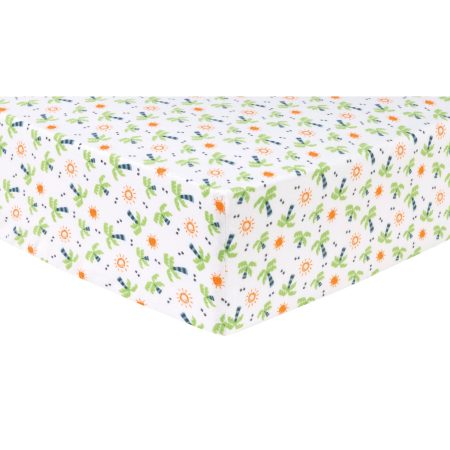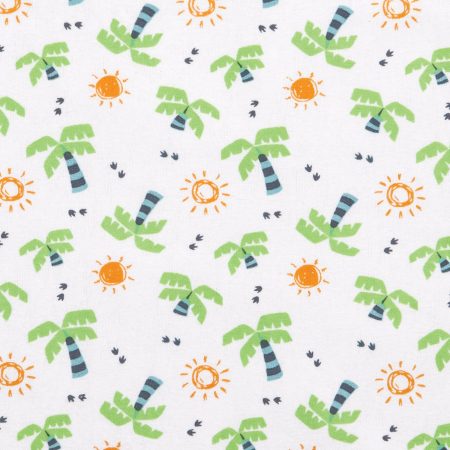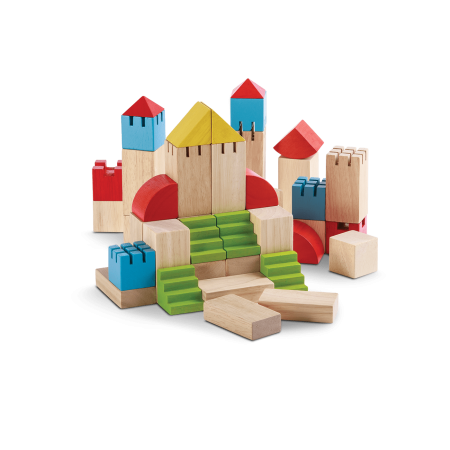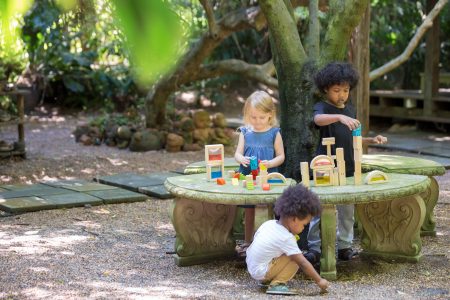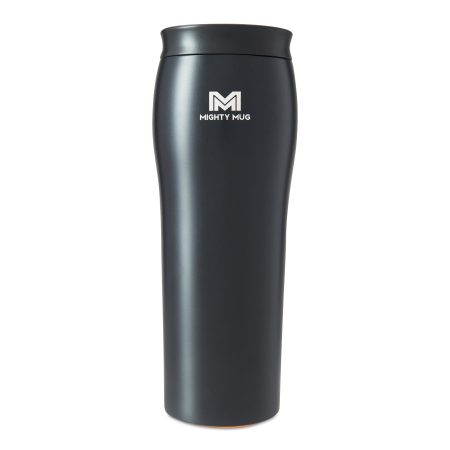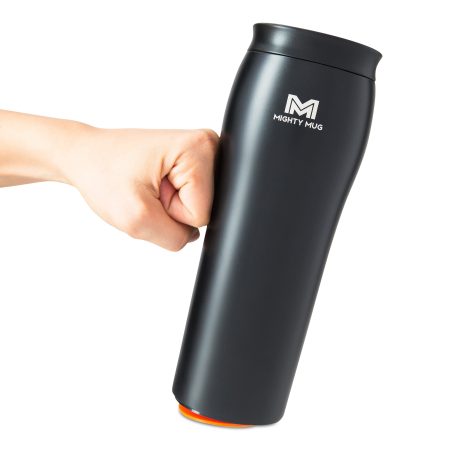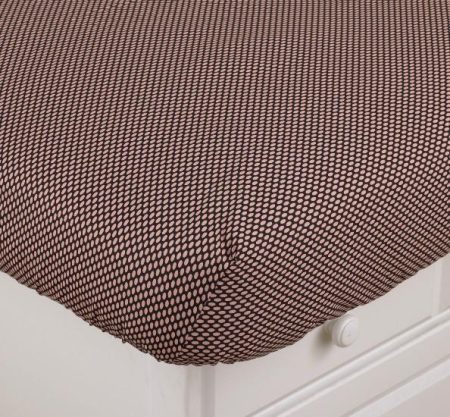Presonus StudioLive Series III Digital Mixer With Multitrack recording
Presonus StudioLive Series III Digital Mixer With Multitrack recording
- 70 % Off$57,906.60
Description
Presonus StudioLive Digital Mixer With Multitrack recording
The most powerful mixer in its class.The StudioLive digital console/recorder is by far the most powerful mixer in its class. The result of nine years of R&D, our third-generation StudioLive mixer is fully recallable, with touch-sensitive, motorized faders and recallable XMAX preamps. Yet despite its extensive features, the StudioLive actually improves upon PreSonus’ legendary ease of use while letting you customize its workflow and operations to fit the way you work. The coveted StudioLive sound is better than ever, including all-new Fat Channel processing, re-engineered from the ground up, and vintage-style EQs and compressors. Add built-in AVB networking, onboard multitrack Capture recording to SD Card, and a complete suite of software, and you have a mixing and recording powerhouse that’s equally formidable in live and studio applications.
Integrated multitrack recording and virtual soundcheck — no computer required.PreSonus Capture recording software is an intuitive, rock-solid multitrack recording application with virtual soundcheck. It’s installed directly into the StudioLive so you can leave your laptop at home. Capture’s one-touch recording makes it easy to record to the StudioLive’s onboard SD multitrack recorder. When you’re finished recording, open your Capture session in Studio One Professional for Mac and Windows (included), and the entire mix scene will transfer to your Studio One session, including fader levels, Fat Channel setting, and yes, any drum solos that you may have had to endure that night.Capture continues to be the most reliable and easiest-to-use live recording software. Now you get all the advantages of Capture without a computer. Record 34 channels direct to SD Card. Get started quickly with one-touch recording: Just put in an SD Card, press Record and Capture does the rest. If you have time, you can manually name your session and individually record-arm selected channels. It makes recording fast, simple, and hassle-free.SD Card is a standard format used in many digital cameras, and it’s a great format for live recording. The cards must adhere to strict testing and performance standards. Each SD Card is class rated and must go through rigorous testing to qualify for that rating, so you can trust that the Class 10 U3 SD Card required for recording 34 channels of uncompressed live audio isn’t going to fail. SD Cards are extremely low profile and mount flush with the surface of the mixer, so you’ll never accidentally hit a card and break it — unlike USB thumb drives. SD Cards have no moving parts, so they are more roadworthy and more reliable than hard drives. And since SD Cards are used in so many consumer devices, they’re readily available.
A re-envisioned Fat Channel.The StudioLive’s Fat Channel has received a major overhaul while continuing to offer digital precision with the heart and soul of analog. Our new Fat Channel implements a plug-in-style workflow that features vintage-style EQ and compression options on every channel, from classic tube limiters to passive EQs. And in addition to channel processing, the StudioLive offers 6-band, fully parametric EQ on all mix outputs. Enjoy extensive, studio-style processing when recording on location or running shows on the road!StudioLive’s Fat Channel processing includes both input and output delays, highpass filter, gate, compressor, limiter, and fully parametric EQ on all channels. There are no limitations, no shared resources, no figuring out what processing is available where. You have all of the Fat Channel processing available at all times, with no compromises or caveats, along with a library of professionally crafted, useful presets and the ability to save, selectively recall, and A/B-compare processor settings.But this next-generation Fat Channel also offers a plug-in-style workflow that’s instantly familiar to any DAW user, with alternative vintage compressor and EQ models available on all channels. The compressors emulate the sound of classic models that would set you back a few grand on eBay. Even cooler, though, the state-space-modeled EQs model the individual components of the original hardware so they sound and behave just like vintage EQs of yesteryear, overflowing with germanium diode mojo.In addition to Fat Channel processing, the StudioLive offers all-new reverb and delay effects, again including vintage options — in all their plate and tape glory.
Define your own layouts, views, and workflows.StudioLive goes above and beyond in providing ways to customize things to best fit the way you work. User layers for the channel faders let you place any channel or bus fader anywhere you want — and they’re easy to set up. But we didn’t stop there. How about customizing your Fat Channel layout, putting the parameters you care about most right at your fingertips? There are even several workflow options to personalize your mixing experience. For instance, you can control the mixer with multiple iPads and –optionally– a computer, each running UC Surface with a different view, enabling you to see and touch all of the controls you need at a given time.Vintage sounds and a plug-in-style workflow are not all that’s new in the redesigned Fat Channel. An entirely new user interface provides intuitive and detailed control not possible with previous Fat Channel layouts. Eight digital scribble strips, encoders, and multicolor buttons, paired with a seven-inch touch screen, deliver detailed information and offer amazingly fast navigation. In addition, StudioLive’s exclusive, user-customizable User Fat Channel layer puts your eight most important channel-processing elements right on top. With these features, you can quickly breeze through all Fat Channel functions in an intuitive and extremely detailed layout.Are you mixing monitors? Then perhaps you want to set up your workflow options to automatically select and solo your currently selected mix. Working in the studio? Set up solo options to behave like a studio console rather than a live sound mixer. Want to link the mutes across all aux mixes — or just link the main mix mutes? How about globally linking all channel mutes across all buses? These and many more options are available to keep you feeling more warm and fuzzy than the snuggie you got last Christmas.
Customize scenes and presets in new and powerful ways—including your way.With StudioLive, we’ve upped the ante and given you more flexibility when working with scenes and presets. Mixer scenes now include Scene Safe, which enables you to protect individual channels from parameter changes when recalling a scene. Similarly, we’ve expanded the concept of Fat Channel presets so that presets have, for practical purposes, become like scenes for individual channels, not only saving input and Fat Channel settings but also aux send and bus assignments. Of course you can also use preset filters to choose what you want to recall.Creating, saving, and recalling scenes is as easy as ever with the StudioLive, and now you can customize scenes even more precisely. You could always decide which settings would be recalled in a global StudioLive scene change. With Scene Safe, a scene change won’t alter the settings on designated “safe” channels. These are invaluable tools, whether you’re mixing for theater, festivals, or houses of worship.We’ve also significantly enhanced Fat Channel presets so that they now save every setting for a specific mixer channel. Of course the presets still include Fat Channel parameters but they also save send levels, bus assignments, and channel names. It’s like having a scene for each individual channel.Imagine, for instance, you’re mixing for a praise band that uses different bass players, depending on who is available. Bass Player 1 is an awesome player, and the rest of the band wants to hear her loud and clear in their monitors. Save a preset with her level raised in the aux mixes, and you’re all set. However, to be honest, Bass Player 2 sucks, and the rest of the band would rather hear less of that guy. No problem; you create a preset with less Bass Player 2 in the monitors.
Create buses and groups to suit your workflow with new FlexMixes.Don’t you hate it when you’re setting up for a show and find you have an unused subgroup—but you’re short one monitor mix? That’s not a problem anymore, thanks to 16 FlexMixes that can be individually designated as aux, subgroup, or matrix mixes. These 16 FlexMixes are in addition to the 4 fixed subgroups giving you a total of 20 mix buses, not counting the main mix and solo buses. We also provided 24 DCAs so you can more easily and flexibly control groups of channels. To top it off, you can choose between 1-to-1 or split-layer workflows: Assign all channels to the top layer, with one fader per input channel, or split the faders between inputs and outputs, including DCAs and aux outputs. These are only a few of the many ways you can customize your StudioLive mixer exactly to your needs and workflow.
Studio One Professional included.For years, we’ve included Studio One Artist with our hardware interfaces and mixers. But with the StudioLive, we know you’re looking to go big or go home—so we chose to bundle the Professional edition of Studio One with each StudioLive. Not only will you enjoy Professional-only features like Melodyne Integration, the mastering Project Page, Note FX, and Macro Controls, you’ll also get tight hardware integration between Studio One and your mixer, including remote preamp control from directly within Studio One.
Integrated, multiplatform software for flexible control and one-click recording.PreSonus StudioLive mixers are tightly integrated with an entire suite of state-of-the-art software. Mix wirelessly or over a wired network from anywhere, using UC Surface touch-control software for Mac, Windows, and iPad. Control your monitor (aux) mixes with QMix-UC for iPhone, iPod touch, and Android devices. Remote control the mixer’s recallable XMAX preamps and Fat Channel processing with Studio One Professional for low-latency recording with effects. (Reverb-drowned singers: rejoice!) Completely automate virtual soundchecks and record shows with Capture. Save mixer scenes with your live recordings in Capture and edit both in Studio One Professional. StudioLive mixers and software work together to form a cohesive ecosystem that helps you achieve your creative vision.
Network-ready, with a choice of computer recording methods.Networking isn’t the future of professional audio systems; it’s here now. StudioLive mixers come equipped with an AVB Ethernet connection that enables you to network multiple StudioLive mixers and compatible computers and stream up to 55 channels of audio to and from a Mac or Windows PC. You also get 38×38 recording via USB 2.0, giving you a choice of computer recording methods. Each channel can independently access its analog input or its dedicated digital return from your computer. And recording is simple and easy: Just launch the included, preconfigured Capture software for one-click recording of all channel inputs and your main mix. Or record with the included Studio One Professional DAW—or with any recording software that supports ASIO or Core Audio. A complete ecosystem of AVB solutions, including stageboxes and personal monitor mixers, will be available in 2017.AVB (Audio Video Bridging, also known as Time Sensitive Networking, or TSN) is a collection of IEEE 802.1 networking standards that define a single digital network for transmitting audio, video, and other forms of data via “smart” switches that can process AVB traffic without compromising network integrity. This means you get guaranteed low-latency audio performance regardless of other network traffic.The StudioLive incorporates second-generation PreSonus AVB networking, enabling complete 55×55 audio networking with Mac and Windows computers. Macs support AVB audio networking natively, so no additional hardware or software is required. If you have an Ethernet jack (or a Thunderbolt-to-Ethernet adapter) and the latest version of macOS, you’re ready for networked audio between your computer and StudioLive mixer. Third-party network cards and drivers for Windows PCs provide AVB/TSN networking with the StudioLive.Remote mix control available on a plethora of both wired and wireless devices.In addition to the AVB recording connection, StudioLive consoles sport a 1 Gb Ethernet port that can connect to a wireless router or directly to a computer, providing remote control of virtually all features. Mix wirelessly or over a wired network from anywhere using UC Surface for Mac, Windows, and iPad. Even add a second—or third, or even fourth!—screen for fast workflow. Musicians can control their monitor mixes onstage with QMix-UC for iPhone, iPod touch, or Android™ device without the need for large monitor networks. Go wireless, wired, or both.Computer system requirements:Below are the minimum computer-system requirements for UC Surface, QMix-UC, and Studio One.Mac
- Mac OS X 10.8.5 64-bit or later
- Intel Core 2 Duo processor (Intel Core i3 or faster recommended)
- 4 GB RAM (8 GB or more recommended)
Windows
- Windows 7 x64/x86 SP1 + platform update, Windows 8.1 x64/x86, Windows 10 x64/x86
- Intel Core 2 Duo or AMD Athlon X2 processor (Intel Core i3 or Athlon X4 or faster recommended)
- 4 GB RAM (8 GB or more recommended)
Mac and Windows Systems
- USB 2.0 port
- Internet connection
- Internal or external 7200 RPM storage drive highly recommended
- 30 GB hard disk space
- Monitor with 1366×768 resolution
iOS
- iOS 9.3 or later
- iPad Pro, iPad Air 2, iPad Air, iPad mini 4, iPad mini with Retina display, iPad (4th generation), iPad mini, iPad (3rd generation), iPad 2
Android (QMix-UC)
- Android 5.0 (Lollipop) or later
- Android smartphone or tablet
Note: The minimum system requirements may differ for DAWs other than Studio One. Please check the requirements for your DAW of choice with its manufacturer.Note that the speed of your processor, amount of RAM and size and speed of your hard drive will greatly affect the overall performance of your recording system. Also, a more powerful system (faster processor with more RAM) will allow for lower latency (signal delay) than you might experience while monitoring audio signals.Technical SpecificationsMicrophone Preamplifier
- Input Type : XLR Female, balanced
- Frequency Response to Main Output (at unity gain) : 20-20 kHz, ±0.5 dBu
- Input Impedance : 1 kΩ
- THD to Main Output : <0.005%, +4 dBu, 20-20 kHz, unity gain, unwtd
- S/N Ratio to Main Output (Ref = +4 dB, 20 kHz BW, unity gain, A-wtd) : 94 dB
- Common Mode Rejection Ratio (1 kHz at unity gain) : 65 dB
- Gain Control Range (±1 dB) : 0 dB to +60 dB
- Maximum Input Level (unity gain) : +12 dBu
- Phantom Power (±2 VDC) : 48 VDC, switchable per channel
Line Inputs
- Type : 1/4” TRS Female, balanced
- Frequency Response to Main Output (at unity gain) : 20-20 kHz, ±0.5 dBu
- Input Impedance : 10 kΩ
- THD to Main Output : <0.005%, +4 dBu, 20-20 kHz, unity gain, unwtd
- S/N Ratio to Main Output (Ref = +4 dB, 20 kHz BW, unity gain, A-wtd) : 94 dB
- Maximum Input Level : +18 dBu
Tape Inputs
- Type : RCA Female, unbalanced (stereo pair)
- Maximum Input Level : +12 dBu, ±0.5 dBu
XLR Outputs
- Type : XLR Male, balanced
- Maximum Output Level : +24 dBu, ±0.5 dBu
- Output Impedance : 100Ω
Line Outputs
- Type : 1/4” TRS Female, balanced
- Maximum Output Level : +18 dBu, ±0.5 dBu
- Output Impedance : 100Ω
Tape Outputs
- Type : RCA Female, unbalanced (stereo pair)
- Maximum Output Level : +18 dBu, ±0.5 dBu
- Output Impedance : 100Ω
Headphone Output
- Type : 1/4” TRS Female, active stereo
- Maximum Output : 100 mW/ch. @ 60Ω load
- Frequency Response : 20 Hz – 20 kHz (± 0.5 dB)
- THD+N : 0.01%, 1 kHz, max gain, 20 Hz BW, unwtd
- S/N Ratio : 96 dB, 1 kHz, max gain, 20 Hz BW, unwtd
System Crosstalk
- Input to Output : -90 dB (Ref = +4 dBu, 20 Hz-20 kHz, unwtd)
- Adjacent Channels : -87 dB (Ref = +4 dBu, 20 Hz-20 kHz, unwtd)
Digital Audio and Control
- ADC Dynamic Range : 115 dB (A-wtd, 48 kHz)
- DAC Dynamic Range : 115 dB (A-wtd, 48 kHz)
- USB Recording Port : USB 2.0, Type-B
- Bluetooth™ Input : 4.1, stereo
- AES/EBU Output : XLR Male
- Network Control Port : RJ-45
- AVB Audio Network Port : Ethercon
- Internal Processing : 32-bit, floating point
- Sampling Rate : 48 kHz (44.1 kHz coming soon)
- A/D/A Bit Depth : 24
- Reference Level for 0 dBFS : +18 dBu
- Total System Latency : 1.9 ms (local routing, analog in-analog out, all processing active)
Clock
- Jitter : <20 ps RMS (20 Hz – 20 kHz)
- Jitter Attenuation : >60 dB (1 ns in, 1 ps out)
Power / Environmental
- Connector : IEC
- Input-Voltage Range : 90 to 230 VAC (±10%)
- Power Requirements (continuous) : 85W
- Recommended Ambient Operating Temperature : 0˚ to 40˚ Celsius / 32˚ to 104˚ Fahrenheit
|
StudioLive 32
|
StudioLive 24
|
StudioLive 16
|
|
|
Mixing Surface
|
Hardware and software
|
Hardware and software
|
Hardware and software
|
|
Mixer Channels
|
32
|
24 physical; 32 internal
|
16 physical; 32 internal
|
|
Mic Inputs
|
32
|
24
|
16
|
|
Preamp Type
|
Recallable XMAX Class A
|
Recallable XMAX Class A
|
Recallable XMAX Class A
|
|
Line Inputs
|
16 (TRS combo)
|
12 (TRS combo)
|
8 (TRS combo)
|
|
Analog Inserts
|
–
|
–
|
–
|
|
Stereo Aux Inputs
|
2
|
2
|
2
|
|
Tape Input (analog)
|
Yes
|
Yes
|
Yes
|
|
Tape Input (Bluetooth)
|
Yes
|
Yes
|
Yes
|
|
Tape Output
|
Yes
|
Yes
|
Yes
|
|
Talkback Input
|
Yes
|
Yes
|
Yes
|
|
Total Mix Buses
|
28
|
28
|
28
|
|
Main L/R Bus
|
Yes
|
Yes
|
Yes
|
|
Main Mono/Center Bus
|
Yes (Mono Sum)
|
Yes (Mono Sum)
|
Yes (Mono Sum)
|
|
LCR Mode
|
–
|
–
|
–
|
|
Aux Mixes
|
16 FlexMixes (Aux, Subgroup, Matrix)
|
16 FlexMixes (Aux, Subgroup, Matrix)
|
16 FlexMixes (Aux, Subgroup, Matrix)
|
|
Analog Aux Outputs
|
16 (12 XLR + 4 TRS)
|
16 (8 XLR + 8 TRS)
|
10 (6 XLR + 4 TRS)
|
|
Direct Outputs
|
–
|
–
|
–
|
|
Control Room/Monitor Outputs
|
Yes
|
Yes
|
Yes
|
|
Stereo Digital Audio Output
|
1 (AES/EBU)
|
1 (AES/EBU)
|
1 (AES/EBU)
|
|
Subgroups
|
4
|
4
|
4
|
|
Dual A/B Fat Channel on all Inputs and Outputs
|
Yes
|
Yes
|
Yes
|
|
Fat Channel Type
|
Third generation with customizable layouts and plug-in workflow (vintage EQs and compressors)
|
Third generation with customizable layouts and plug-in workflow (vintage EQs and compressors)
|
Third generation with customizable layouts and plug-in workflow (vintage EQs and compressors)
|
|
FX Buses and Processors
|
4 (any combination of reverb, delay)
|
4 (any combination of reverb, delay)
|
4 (any combination of reverb, delay)
|
|
GEQ
|
8
|
8
|
8
|
|
Parametric EQ on Outputs
|
6-band
|
6-band
|
6-band
|
|
Mute Groups
|
8
|
8
|
8
|
|
Scenes
|
Save, Copy, Recall (with filters), Scene Safe
|
Save, Copy, Recall (with filters), Scene Safe
|
Save, Copy, Recall (with filters), Scene Safe
|
|
Quick Scenes
|
8
|
8
|
8
|
|
Filter DCA Groups
|
24
|
24
|
24
|
|
Multichannel Digital I/O
|
55×55 (AVB) or 40×40 (USB 2.0)
|
55×55 (AVB) or 40×40 (USB 2.0)
|
55×55 (AVB) or 40×40 (USB 2.0)
|
|
Built-in Multitrack Recorder
|
Yes (SD Card)
|
Yes (SD Card)
|
Yes (SD Card)
|
|
Cascading for up to 64 channels
|
–
|
–
|
–
|
|
AVB
|
Yes (recording)
|
Yes (recording)
|
Yes (recording)
|
|
Dante
|
–
|
–
|
–
|
|
Bundled Studio One
|
Studio One Professional
|
Studio One Artist
|
Studio One Artist
|
|
Other Bundled Software*
|
UC Surface, Capture, QMix-UC
|
UC Surface, Capture, QMix-UC
|
UC Surface, Capture, QMix-UC
|
|
Integrates Smaart Audio Analysis
|
No (built-in RTA)
|
No (built-in RTA)
|
No (built-in RTA)
|
Made in China
Additional information
| Version | StudioLive16, StudioLive24, StudioLive32 |
|---|



